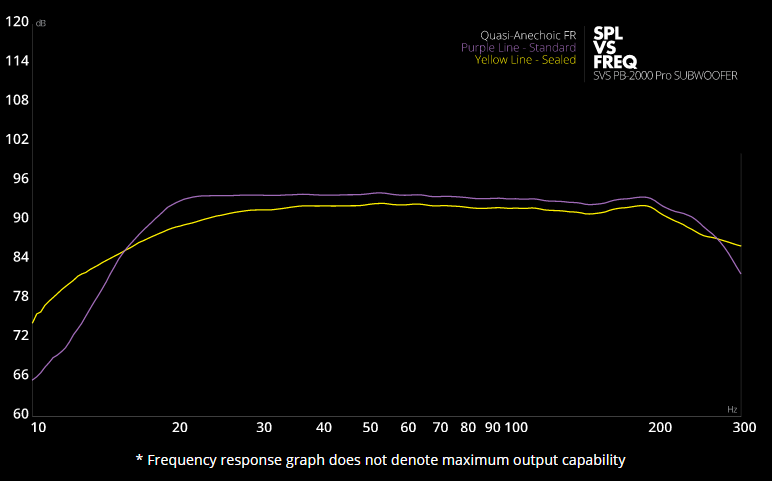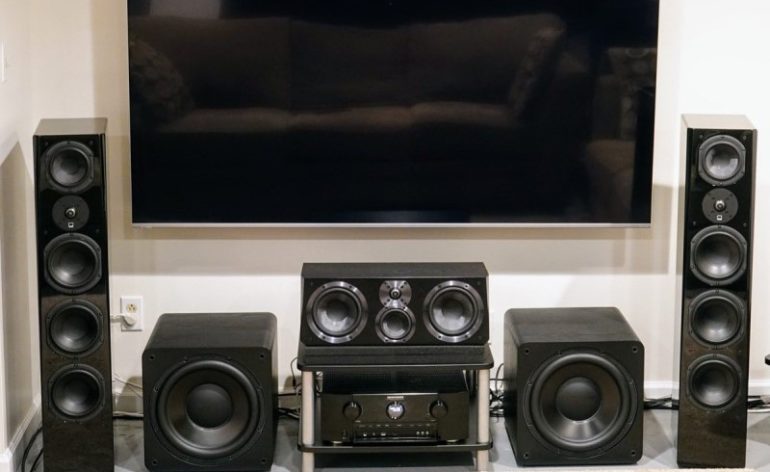Can Adding More Subwoofers Get You Lower Extension?
We’ve talked about dual (and more) subwoofers a lot around here. The main reason to have two subwoofers is to even out the bass response in your room so that every seat (theoretically) gets better bass response. But a common question is about lower frequency response. If you have two (or more) subwoofers, will they exhibit any lower extension than a single subwoofer? If you look online, you’ll find that the answer is usually a resounding and emphatic “No!” But we’re here to tell you that it is a very conditional and situational “Yes.” With caveats. A lot of them. Let’s discuss.
The Real and True Answer is No
For most people, in most rooms, adding more subwoofers does not equate to lower extension. More output? Absolutely. More uniform bass response across more seats in your theater? Surely. But more extension? That’s a harder one.
In general, adding subwoofers doesn’t increase their extension. They don’t play any lower simply because there is another one next to it. It makes sense that they’d play louder. Just like two people that are the same strength can lift more but not double. Having those same two people work together doesn’t make them run any faster. However, we can take advantage of that additional volume in very specific situations with very specific subwoofers.

When the Answer is Yes
In order to leverage the extra output into added extension with your multiple subwoofers, you are going to need a couple of things to be true. First, you need sealed subwoofers. Sealed subwoofers, unlike ported subwoofers, have a more gradual roll-off of their low-end performance. If you have multiple sealed subwoofers, you might be able to eek a little more extension out of them.
Second, you need your subwoofers to be oversized for your space. You’ll know this is the case if the dial on your subwoofer’s volume is set very low and you are still able to hit reference volume. This means your subwoofers have a lot of headroom (something we normally think is a waste of money). Headroom means that your subwoofers have the ability to play much louder than you need.
Lastly, you need the ability to manually measure and EQ your system. Many modern room correction systems will give you some control over the EQ you apply to your system. That may or may not be enough for what we will be attempting here. For measurement, you’ll likely need access to a microphone and REW (Room EQ Wizard).
How To Increase The Extension of Your Subwoofers
If all of the above have been met, you can theoretically get a little more extension out of your system. Here’s how you do it. First, you need to have an idea of how your subwoofers are actually performing in your room. Using REW, measure the bass extension of your system. You’ll see something that looks like the yellow line in the graph below:

For instance, if you want 20Hz extension, you’ll need to EQ down all the other frequencies so that the graph shows that all frequencies are the same volume down to 20Hz. You would then raise the volume level on the subwoofers so that your subwoofers are again hitting reference level.
The idea here is simple. The sealed subwoofers can’t play as low, but the roll-off is gradual. If you lower the output of the rest of the frequencies to match, and you have enough headroom left in your amplifiers and subwoofer output, you can raise the overall volume.
Should You Shop This Way?
Absolutely not. This “solution” is only for those that find themselves in very small rooms with very large sealed subwoofers and the equipment necessary to take advantage of their situation. For most people, it is far more cost-effective to simply buy the subwoofers that have the correct extension. Also, that extra headroom is not insignificant. To really change the extension in any meaningful way, you need a LOT of extra output. This solution won’t work for those that have bought a small, underpowered subwoofer and were hoping that they could add a second for more extension. In those cases, selling the underpowered subwoofer and buying the correct-sized subwoofer for your space is best.


